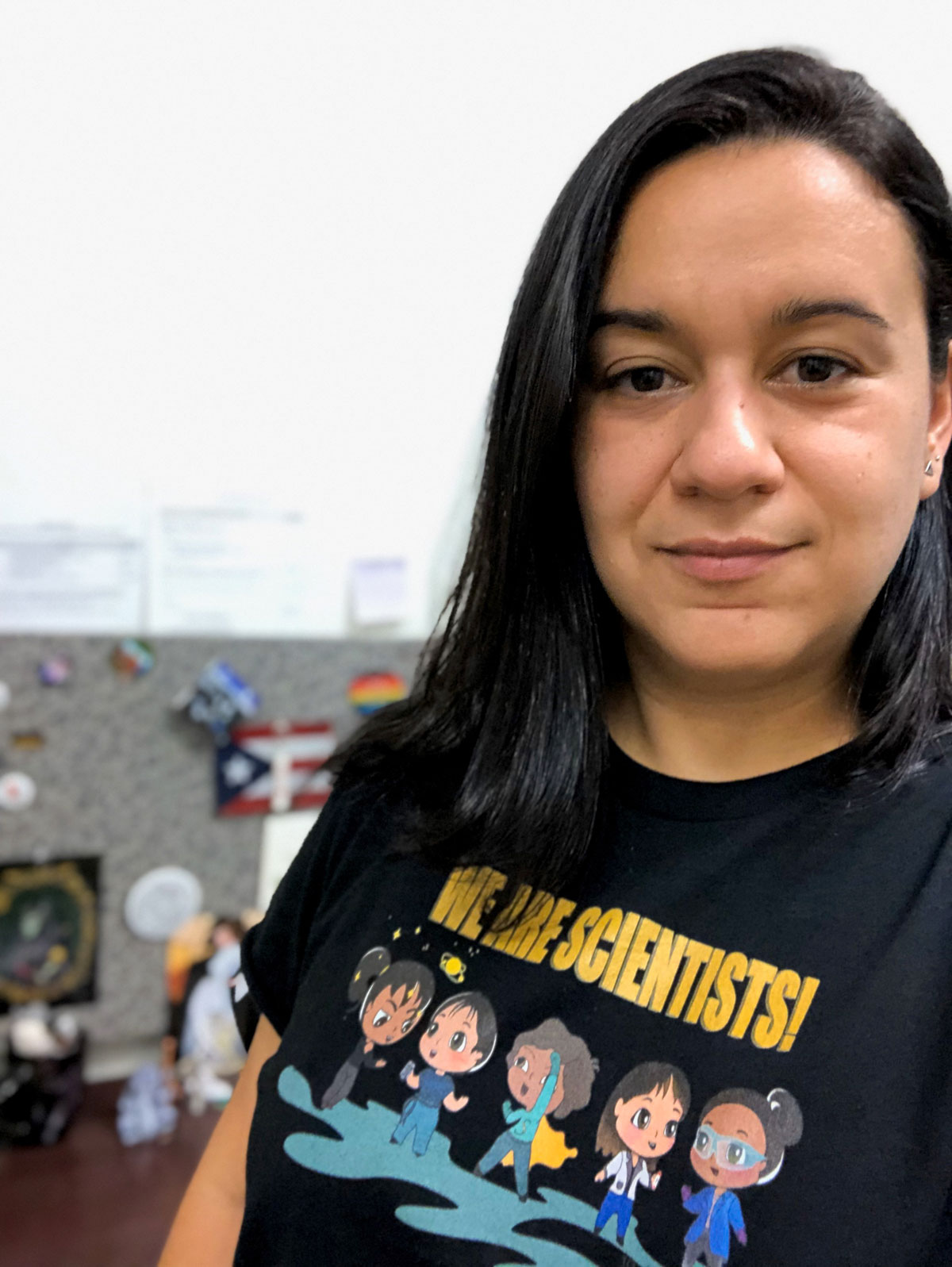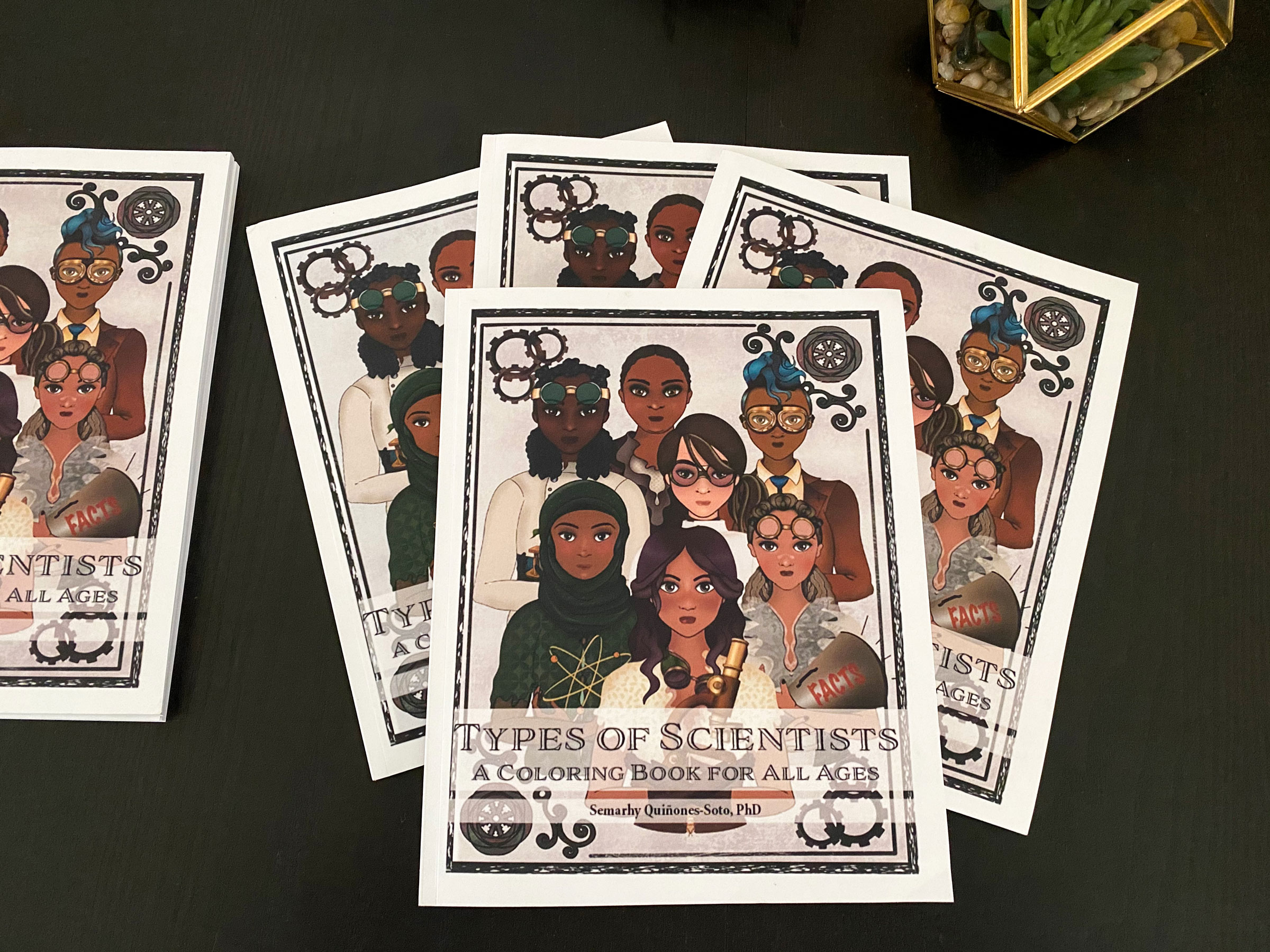故事内容
萨克州立大学讲师通过艺术促进女性在科学领域的发展

2020年12月11日
Semarhy Quinones-Soto从小看着她的母亲混合化学物质,观察显微镜,为波多黎各大学(University of Puerto Rico, Humacao)的微生物学学生准备载玻片。
The hours she spent in her mother’s lab after school ignited her passion for science, particularly microbiology.
但是,奎诺内斯-索托在美国开始她的博士工作后,她注意到缺乏女性榜样,尤其是有色人种女性。
“I wasn’t being heard,” she said. “I was being treated differently just because of my gender.” 她开始思考如何帮助提高女性在科学领域的知名度和可信度。

奎诺内斯-索托现在是博彩平台的生物学讲师,她将自己对艺术和科学的热爱结合起来,促进科学、技术、工程和数学领域的性别和种族多样性。 她创作了数字插图,描绘了在STEM领域工作的所有肤色和种族的女性,并将这些图像融入印刷品、贴纸和其他物品中,并在社交媒体上分享和在线销售。
最近几个月,这些插图获得了广泛关注,最近出现在奎诺斯-索托(Quinones-Soto)制作并出版的一本涂色书中,这本书在亚马逊(Amazon)上上市三周就卖出了250多本。 她的作品还登上了一本神经科学杂志的封面。
奎诺内斯-索托说,她希望女性能在她的照片中认出自己,这些艺术作品将激励年轻女性在STEM领域从事职业。
“For me, it is important to represent women in STEM because you cannot be what you cannot see,” she said. “I’ve always loved to draw, but now I am drawing with a purpose.”
尽管越来越多的女性从事科学事业,但她们的代表性仍然不足。 根据美国国家科学基金会(National Science Foundation)的数据,黑人女性占美国女性人口的12.2%,但只占科学博士学位的4.2%。 拉丁裔女性占美国女性人口的13.7%,但只占科学博士学位的5.8%。
When Quinones-Soto showed 囊状态 Biology Professor Enid Gonzalez-Orta some of her first images portraying women in STEM, “I was so moved and impressed that I knew she had to share them with the world,” the professor said.
“It has been amazing to see meaningful impact of her work on other women in STEM, particularly underrepresented women,” said Gonzalez-Orta, director of 囊状态’s Science Educational Equity Program. “One of the things that always makes me smile is when I see students displaying stickers with her art on them on their water bottles and computers.”
随着STEM学者、教师和有抱负的科学家在社交媒体上分享他们的兴奋,涂色书将该项目提升到了一个新的水平。
这本名为《科学家的类型:适合所有年龄的涂色书》的出版物的封面,展示了不同种族和文化的女性的数字艺术图像,以及实验室的符号和工具。 Quinones-Soto dedicates the book to “my mom and all women in science.”
除了提供彩色图像外,这本书还讨论了不同的科学领域,并为当前和未来的科学家提供了有关工作和职业的信息。 During its first two weeks on Amazon, it was listed as the company’s No. 1 new release in the Science and Technology Teaching Materials category.
Quinones-Soto’s images also are featured on the cover of the latest issue of the Journal of Neuroscience 研究.

这件艺术品及其隐含的关于科学包容性的信息在社交媒体上引起了美国各地,甚至远至德国和澳大利亚的回应。
“People are contacting me with the most amazing comments,” said Quinones-Soto. “They are saying, ‘This is the first time I’ve ever seen anything that looks remotely like me.’ They send me messages out of nowhere, and it makes me cry.”
Quinones-Soto said the project has given her “a sense of belonging that I didn’t get in science alone. It’s opened up a world where I never knew I belonged. It’s given me a sense of purpose and the ability to make a difference.”
冈萨雷斯-奥尔塔欢迎她发出的信息。
They “have brought such great joy and inspiration to so many women and underrepresented persons in STEM, regardless of age, in a profound way,” she said.
“Semarhy’s work is what the scientific community needs to lift up and inspire underrepresented people to pursue and continue their work in STEM during such a critical time in our society.”
To view Quinones-Soto’s images of women in science, go to www.instagram.com/semarhyq.art.
媒体资源
寻找教师专家?
Contact University Communications
(916) 217-8366
communications@csus.edu